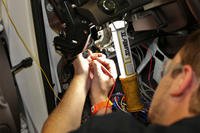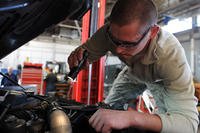For decades, European automakers have championed diesel engines more than anyone else. After all, the technology was invented there – by German engineer Rudolf Diesel in 1897 – and the continent’s automakers embraced it wholeheartedly in the 1990s and early 2000s. Faced with new European Union emissions rules aimed at cutting carbon dioxide, brands like Volkswagen, Peugeot, and BMW promoted diesel as the cleaner, more efficient alternative to gasoline. The superior fuel economy and lower pump prices made diesel-powered cars immensely popular among buyers. By the early 2010s, diesel had become the dominant fuel for European motorists – until Dieselgate, of course.
Yet despite Europe’s long-standing diesel obsession, the world’s highest-revving diesel engine didn’t come from there at all. It came from Japan – a country better known for hybrids and more recently, hydrogen fuel cells. The engine in question was built by Mazda, a company renowned for its engineering and penchant for bucking trends, but its late debut meant it saw only limited sales in the US, where it was offered in the CX-5 compact crossover.
A Case Of Bad Timing

Mazda
Mazda unveiled the second-generation CX-5 in 2016 and promised buyers they would soon have the option of a diesel. It was a turbocharged 2.2-liter inline-four known as the Skyactiv-D 2.2. The engine delivered the high-torque characteristics typical of diesels but also capable of revving freely to high rpm levels, reaching up to 5,500 rpm. The result of this setup was a sportier, more engaging driving feel reminiscent of a gasoline engine. For context, the redline is around 500 to 1,000 rpm higher than on diesel powerplants fitted to most passenger vehicles.
The peak power of 168 horsepower came at 4,000 rpm, with the maximum torque of 290 pound-feet at 2,000 rpm. The 0-60 time in the diesel-powered CX-5 was about eight seconds. With front-wheel drive, the EPA-rated fuel economy was 28 miles per gallon city, 31 mpg highway, and 29 mpg combined. These figures were only marginally better than the standard 2.5-liter gasoline engine’s 25 mpg city, 31 mpg highway, and 28 mpg combined, meaning the diesel option never saw much demand, at least in the United States.

Mazda
Mazda first launched this diesel engine in 2012, initially in Japan and select European markets, in both the CX-5 and the former Mazda6. However, tougher emissions regulations in the US and the extra scrutiny on diesels following the Dieselgate scandal, which erupted in 2015, delayed the powerplant's arrival. The diesel finally appeared in the US for the 2019 model year CX-5 at a starting price of $41,000. By then, demand for diesel outside of pickup trucks was waning, and Mazda dropped the engine in the US after 2020.
The engine is still available elsewhere, but Mazda is slowly phasing it out. The automaker has already launched a replacement: a turbocharged 3.3-liter inline-6 with a 48-volt mild-hybrid system, dubbed the e-Skyactiv D. The powerplant delivers 228 hp and 369 lb-ft in most markets. Still, it doesn't rev quite as high as the Skyactiv-D 2.2. There are no plans to offer this new engine in the US, and Mazda is likely to give up on diesels entirely in the near future as the automaker's focus shifts to hybrids and electric vehicles.
Why High-Revving Diesels Are Rare

Mazda
To understand why diesel engines traditionally don’t rev high. It’s important to understand how they work, because there are key differences from gasoline engines beyond simply the fuel type. Diesel engines rely on compression ignition, meaning the fuel ignites under extreme pressure rather than from a spark plug causing the combustion. This requires very high compression ratios, usually from 16:1 up to 25:1, which places enormous stress on the pistons, connecting rods, and crankshaft. Running at high revs under such pressures increases the risk of mechanical failure, so engineers deliberately limit the maximum engine speed to protect durability.
Diesel engines are also typically designed with longer piston strokes, which improve torque and efficiency at low engine speeds but naturally limit revving potential. The heavier internal components, slower-burning fuel, and focus on generating peak torque at low revs all reinforce this low-rpm design philosophy. Because of these constraints, most diesel engines redline below 5,000 rpm.
Read the full article on CarBuzz
This article originally appeared on CarBuzz and is republished here with permission.










